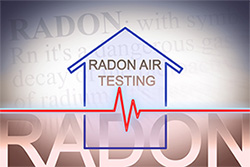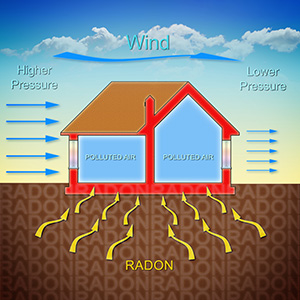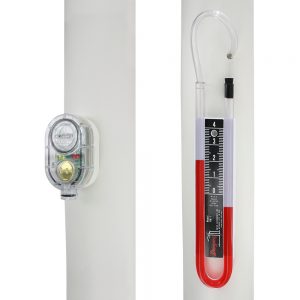 Exclusive message from #KCdesiPartner Krishna Realtor
Exclusive message from #KCdesiPartner Krishna Realtor
For anyone who has recently purchased or sold a home, they may have noticed a radon inspection clause in the purchasing agreement. What is radon, and why are we testing for it in our homes?
Radon is an odorless, colorless gas that is naturally released into the environment as a decay byproduct of radium. Radium is a decay byproduct of uranium which can be found in certain types of rock, soil, or water. Some areas have higher concentrations of radon due to the soil composition which leads to additional testing for radon.

When radon gas decays, it forms radioactive particles that can get trapped in your lungs once inhaled. In fact, “Exposure to radon in the home is responsible for an estimated 21,000 lung cancer deaths in the U.S. each year” per the U.S. EPA. Because radon is typically found in the soil, it is most likely to diffuse from the soil into homes and buildings because of their lower concentration. This is very similar to how heat moves from a warm space into a cooler space.
So, what can be done to protect our homes? Typically a radon inspection will occur to measure the levels of radon found in the space. Depending on the levels measured, a radon mitigation system may be installed. The most common type of radon mitigation system is a sub-slab depressurization or active soil depressurization system. These systems primarily use a vent pipe system in conjunction with a fan that pulls radon from beneath the house and vents it outside away from windows and other building openings.
The fans used in radon mitigation systems are typically mounted outdoors, in a basement, or in an attic space to prevent noise nuisances from homeowners. Because of this, there is not an easy way to verify that your radon mitigation system (specifically the fan) is operating to exhaust radon.

Released in 2018, Dwyer’s Air Flow Indicator and Alarm (Series DAFA) was designed with the homeowner in mind. The DAFA is a low cost flow indicator and alarm designed to be used in conjunction with radon mitigation systems. Typically, radon mitigation systems are installed with a U-Tube style manometer that the homeowner inspects to verify pressure changes in the mitigation system indicating fan operation. Frequently, the U-Tube manometers are mounted in the basement or the garage and are not frequently inspected by the homeowner.
About KCdesi
KCdesi is your community hub for connecting, sharing, and staying informed about all things Indian in Kansas City and its suburbs. From business listings to event updates, free classifieds, and more, we’re here to bring the community together.
Have something to share? Post your own article easily using the Post menu item at the top of the page. Join us in building a vibrant, engaged community!
